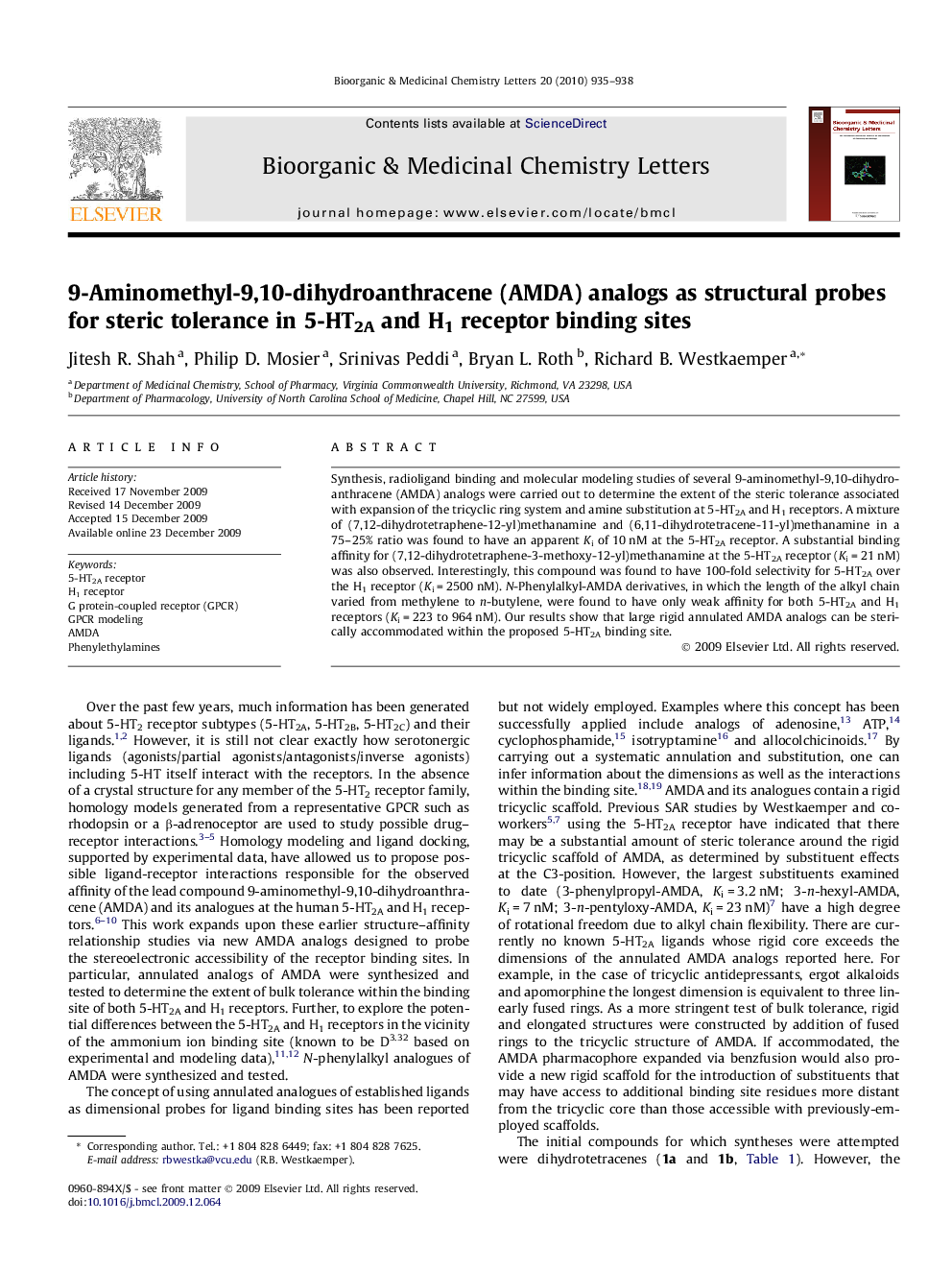| Article ID | Journal | Published Year | Pages | File Type |
|---|---|---|---|---|
| 1372054 | Bioorganic & Medicinal Chemistry Letters | 2010 | 4 Pages |
Synthesis, radioligand binding and molecular modeling studies of several 9-aminomethyl-9,10-dihydroanthracene (AMDA) analogs were carried out to determine the extent of the steric tolerance associated with expansion of the tricyclic ring system and amine substitution at 5-HT2A and H1 receptors. A mixture of (7,12-dihydrotetraphene-12-yl)methanamine and (6,11-dihydrotetracene-11-yl)methanamine in a 75–25% ratio was found to have an apparent Ki of 10 nM at the 5-HT2A receptor. A substantial binding affinity for (7,12-dihydrotetraphene-3-methoxy-12-yl)methanamine at the 5-HT2A receptor (Ki = 21 nM) was also observed. Interestingly, this compound was found to have 100-fold selectivity for 5-HT2A over the H1 receptor (Ki = 2500 nM). N-Phenylalkyl-AMDA derivatives, in which the length of the alkyl chain varied from methylene to n-butylene, were found to have only weak affinity for both 5-HT2A and H1 receptors (Ki = 223 to 964 nM). Our results show that large rigid annulated AMDA analogs can be sterically accommodated within the proposed 5-HT2A binding site.
Graphical abstractThe synthesis, biological evaluation, and molecular modeling of dihydrotetracene/dihydrotetraphene and N-phenylalkyl analogs of AMDA as molecular probes of the ligand binding sites in 5-HT2A and H1 receptors is reported.Figure optionsDownload full-size imageDownload as PowerPoint slide
